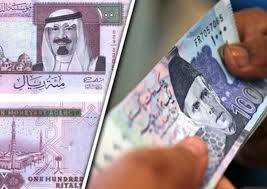Introduction to Riyal to PKR Exchange Rate
Understanding the exchange rate between the Riyal to PKR is crucial for various reasons. Whether you’re a business involved in international trade or an individual planning a trip, fluctuations in exchange rates can significantly impact your financial decisions.
Factors Influencing Riyal to PKR Exchange Rate
The exchange rate between the Riyal and PKR is influenced by a myriad of factors. Economic indicators such as inflation rates, interest rates, and economic growth play a significant role. Additionally, political stability in both countries and global events like geopolitical tensions or economic crises can also affect the exchange rate.
Economic Indicators
Economic indicators like inflation rates, interest rates, and GDP growth are closely monitored by investors and traders. Higher inflation rates or lower interest rates in one country compared to another can lead to depreciation of its currency against others.
Political Stability
Political stability is essential for maintaining investor confidence and stability in the currency markets. Countries with political unrest or uncertainty may experience volatile exchange rates as investors seek safer havens for their investments.
Global Events
Global events such as natural disasters, geopolitical tensions, or changes in international trade policies can have a significant impact on currency values. For example, disruptions in oil supply can affect the Riyal due to Saudi Arabia’s prominent position in the global oil market.
Historical Trends of Riyal to PKR Exchange Rate
The exchange rate between the Riyal and PKR has seen significant fluctuations over the years. Historical events such as changes in oil prices, political upheavals, and economic reforms have all influenced the exchange rate.
Significant Fluctuations
The exchange rate between the Riyal and PKR has experienced periods of stability as well as sharp fluctuations. Factors such as changes in oil prices, political instability, and economic policies have all contributed to these fluctuations.
Key Events
Several key events have had a significant impact on the exchange rate between the Riyal and PKR. These include changes in oil prices, political unrest in either country, and economic reforms aimed at stabilizing the currency.
Current Riyal to PKR Exchange Rate
The current exchange rate between the Riyal and PKR is subject to continuous fluctuations based on various factors. Traders and investors closely monitor these fluctuations to make informed decisions.
Recent Trends
Recent trends in the exchange rate between the Riyal and PKR indicate [provide recent data and trends].
Factors Influencing the Current Rate
Factors such as [list factors influencing the current rate].
Impact of Riyal to PKR Exchange Rate on Economy
The exchange rate between the Riyal and PKR has a significant impact on the economies of both Saudi Arabia and Pakistan. Fluctuations in the exchange rate can affect various aspects of the economy, including imports, exports, inflation, and the cost of living.
Effects on Imports and Exports
A depreciating PKR can make imports more expensive for Pakistan, leading to higher costs for businesses and consumers. On the other hand, it can make Pakistani exports more competitive in the international market, potentially boosting exports.
Influence on Inflation and Cost of Living
Fluctuations in the exchange rate can also affect inflation and the cost of living in both countries. A depreciating PKR can lead to higher import costs, contributing to inflationary pressures and ultimately affecting the cost of living for Pakistani citizens.
Strategies for Dealing with Fluctuating Exchange Rates
Businesses and individuals can adopt various strategies to mitigate the risks associated with fluctuating exchange rates.
Hedging Techniques for Businesses
Businesses engaged in international trade can use hedging techniques such as forward contracts or options to protect themselves against adverse exchange rate movements.
Tips for Individuals
Individuals exchanging currencies for travel or investment purposes can [provide tips for individuals].
Forecasting the Riyal to PKR Exchange Rate
Forecasting the exchange rate between the Riyal and PKR is a challenging task due to the multitude of factors involved.
Methods Used for Predicting Future Rates
Forecasting methods include [mention methods used for predicting future rates].
Challenges and Limitations
However, forecasting exchange rates accurately is inherently difficult due to [mention challenges and limitations].
Tips for Getting the Best Exchange Rate
When exchanging Riyals for PKR or vice versa, it’s essential to consider various factors to get the best possible rate.
Comparison of Exchange Services
Comparing exchange services can help individuals and businesses find the most competitive rates and lowest fees.
Timing Considerations
Timing is crucial when exchanging currencies, as rates can fluctuate throughout the day. Monitoring exchange rate trends can help individuals time their transactions effectively.
Riyal to PKR Exchange Rate in the Context of International Trade
The exchange rate between the Riyal and PKR plays a significant role in bilateral trade between Saudi Arabia and Pakistan.
Implications for Bilateral Trade
Fluctuations in the exchange rate can impact the cost of imports and exports between the two countries, affecting trade volumes and balance of payments.
Strategies for Mitigating Risks
Businesses engaged in international trade can [provide strategies for mitigating risks].
Effects of Riyal to PKR Exchange Rate on Tourism
Tourists traveling between Saudi Arabia and Pakistan are also affected by fluctuations in the exchange rate.
Impact on Travel Expenses
Changes in the exchange rate can affect the cost of travel expenses such as accommodation, dining, and transportation.
Strategies for Budgeting
Travelers can [provide strategies for budgeting].
Government Policies and Exchange Rate Management
Governments play a crucial role in managing exchange rates through various policy tools.
Role of Central Banks
Central banks intervene in currency markets to stabilize exchange rates and achieve macroeconomic objectives.
Policy Tools
Policy tools used to influence exchange rates include [mention policy tools].
Case Study: Recent Events Affecting Riyal to PKR Exchange Rate
Analyzing a recent event and its impact on the exchange rate can provide insights into market dynamics.
Analysis
[Provide analysis of a recent event and its impact].
Expert Opinions on Riyal to PKR Exchange Rate
Economists and financial analysts offer valuable insights into exchange rate dynamics and strategies for managing currency risk.
Recommendations
Experts recommend [provide recommendations].
Conclusion
Understanding the dynamics of the exchange rate between the Riyal and PKR is essential for businesses, investors, and individuals alike. By staying informed about economic indicators, political developments, and global events, stakeholders can make informed decisions to mitigate risks and capitalize on opportunities in the currency market.
FAQs about Riyal to PKR Exchange Rate
What factors influence the Riyal to PKR exchange rate?
Economic indicators, political stability, and global events are primary factors influencing the exchange rate between the Riyal and PKR.
How often does the exchange rate fluctuate?
The exchange rate between the Riyal and PKR can fluctuate daily based on market conditions and news events.
How can businesses hedge against currency fluctuations?
Businesses can hedge against currency fluctuations using financial instruments such as forward contracts or options.
Is it better to exchange currency at banks or exchange offices?
It depends on various factors such as exchange rates, fees, and convenience. Comparing rates and services can help individuals get the best deal.
What impact does the Riyal to PKR exchange rate have on international trade?
Fluctuations in the exchange rate can affect the cost of imports and exports, influencing trade volumes and competitiveness.




